Azadeh Alavi
Analyzing Advanced AI Systems Against Definitions of Life and Consciousness
Feb 07, 2025



Abstract:Could artificial intelligence ever become truly conscious in a functional sense; this paper explores that open-ended question through the lens of Life, a concept unifying classical biological criteria (Oxford, NASA, Koshland) with empirical hallmarks such as adaptive self maintenance, emergent complexity, and rudimentary self referential modeling. We propose a number of metrics for examining whether an advanced AI system has gained consciousness, while emphasizing that we do not claim all AI stems can become conscious. Rather, we suggest that sufficiently advanced architectures exhibiting immune like sabotage defenses, mirror self-recognition analogs, or meta-cognitive updates may cross key thresholds akin to life-like or consciousness-like traits. To demonstrate these ideas, we start by assessing adaptive self-maintenance capability, and introduce controlled data corruption sabotage into the training process. The result demonstrates AI capability to detect these inconsistencies and revert or self-correct analogous to regenerative biological processes. We also adapt an animal-inspired mirror self recognition test to neural embeddings, finding that partially trained CNNs can distinguish self from foreign features with complete accuracy. We then extend our analysis by performing a question-based mirror test on five state-of-the-art chatbots (ChatGPT4, Gemini, Perplexity, Claude, and Copilot) and demonstrated their ability to recognize their own answers compared to those of the other chatbots.
Multimodal Fusion Learning with Dual Attention for Medical Imaging
Dec 02, 2024Abstract:Multimodal fusion learning has shown significant promise in classifying various diseases such as skin cancer and brain tumors. However, existing methods face three key limitations. First, they often lack generalizability to other diagnosis tasks due to their focus on a particular disease. Second, they do not fully leverage multiple health records from diverse modalities to learn robust complementary information. And finally, they typically rely on a single attention mechanism, missing the benefits of multiple attention strategies within and across various modalities. To address these issues, this paper proposes a dual robust information fusion attention mechanism (DRIFA) that leverages two attention modules, i.e. multi-branch fusion attention module and the multimodal information fusion attention module. DRIFA can be integrated with any deep neural network, forming a multimodal fusion learning framework denoted as DRIFA-Net. We show that the multi-branch fusion attention of DRIFA learns enhanced representations for each modality, such as dermoscopy, pap smear, MRI, and CT-scan, whereas multimodal information fusion attention module learns more refined multimodal shared representations, improving the network's generalization across multiple tasks and enhancing overall performance. Additionally, to estimate the uncertainty of DRIFA-Net predictions, we have employed an ensemble Monte Carlo dropout strategy. Extensive experiments on five publicly available datasets with diverse modalities demonstrate that our approach consistently outperforms state-of-the-art methods. The code is available at https://github.com/misti1203/DRIFA-Net.
* 10 pages
Guidelines for Augmentation Selection in Contrastive Learning for Time Series Classification
Jul 12, 2024Abstract:Self-supervised contrastive learning has become a key technique in deep learning, particularly in time series analysis, due to its ability to learn meaningful representations without explicit supervision. Augmentation is a critical component in contrastive learning, where different augmentations can dramatically impact performance, sometimes influencing accuracy by over 30%. However, the selection of augmentations is predominantly empirical which can be suboptimal, or grid searching that is time-consuming. In this paper, we establish a principled framework for selecting augmentations based on dataset characteristics such as trend and seasonality. Specifically, we construct 12 synthetic datasets incorporating trend, seasonality, and integration weights. We then evaluate the effectiveness of 8 different augmentations across these synthetic datasets, thereby inducing generalizable associations between time series characteristics and augmentation efficiency. Additionally, we evaluated the induced associations across 6 real-world datasets encompassing domains such as activity recognition, disease diagnosis, traffic monitoring, electricity usage, mechanical fault prognosis, and finance. These real-world datasets are diverse, covering a range from 1 to 12 channels, 2 to 10 classes, sequence lengths of 14 to 1280, and data frequencies from 250 Hz to daily intervals. The experimental results show that our proposed trend-seasonality-based augmentation recommendation algorithm can accurately identify the effective augmentations for a given time series dataset, achieving an average Recall@3 of 0.667, outperforming baselines. Our work provides guidance for studies employing contrastive learning in time series analysis, with wide-ranging applications. All the code, datasets, and analysis results will be released at https://github.com/DL4mHealth/TS-Contrastive-Augmentation-Recommendation.
Leveraging SPD Matrices on Riemannian Manifolds in Quantum Classical Hybrid Models for Structural Health Monitoring
Jun 06, 2024Abstract:Realtime finite element modeling of bridges assists modern structural health monitoring systems by providing comprehensive insights into structural integrity. This capability is essential for ensuring the safe operation of bridges and preventing sudden catastrophic failures. However, FEM computational cost and the need for realtime analysis pose significant challenges. Additionally, the input data is a 7 dimensional vector, while the output is a 1017 dimensional vector, making accurate and efficient analysis particularly difficult. In this study, we propose a novel hybrid quantum classical Multilayer Perceptron pipeline leveraging Symmetric Positive Definite matrices and Riemannian manifolds for effective data representation. To maintain the integrity of the qubit structure, we utilize SPD matrices, ensuring data representation is well aligned with the quantum computational framework. Additionally, the method leverages polynomial feature expansion to capture nonlinear relationships within the data. The proposed pipeline combines classical fully connected neural network layers with quantum circuit layers to enhance model performance and efficiency. Our experiments focused on various configurations of such hybrid models to identify the optimal structure for accurate and efficient realtime analysis. The best performing model achieved a Mean Squared Error of 0.00031, significantly outperforming traditional methods.
Self-Supervised Learning for Time Series: Contrastive or Generative?
Mar 14, 2024Abstract:Self-supervised learning (SSL) has recently emerged as a powerful approach to learning representations from large-scale unlabeled data, showing promising results in time series analysis. The self-supervised representation learning can be categorized into two mainstream: contrastive and generative. In this paper, we will present a comprehensive comparative study between contrastive and generative methods in time series. We first introduce the basic frameworks for contrastive and generative SSL, respectively, and discuss how to obtain the supervision signal that guides the model optimization. We then implement classical algorithms (SimCLR vs. MAE) for each type and conduct a comparative analysis in fair settings. Our results provide insights into the strengths and weaknesses of each approach and offer practical recommendations for choosing suitable SSL methods. We also discuss the implications of our findings for the broader field of representation learning and propose future research directions. All the code and data are released at \url{https://github.com/DL4mHealth/SSL_Comparison}.
Hybrid Classical-Quantum method for Diabetic Foot Ulcer Classification
Oct 05, 2021



Abstract:Diabetes is a raising problem that affects many people globally. Diabetic patients are at risk of developing foot ulcer that usually leads to limb amputation, causing significant morbidity, and psychological distress. In order to develop a self monitoring mobile application, it is necessary to be able to classify such ulcers into either of the following classes: Infection, Ischaemia, None, or Both. In this work, we compare the performance of a classical transfer-learning-based method, with the performance of a hybrid classical-quantum Classifier on diabetic foot ulcer classification task. As such, we merge the pre-trained Xception network with a multi-class variational classifier. Thus, after modifying and re-training the Xception network, we extract the output of a mid-layer and employ it as deep-features presenters of the given images. Finally, we use those deep-features to train multi-class variational classifier, where each classifier is implemented on an individual variational circuit. The method is then evaluated on the blind test set DFUC2021. The results proves that our proposed hybrid classical-quantum Classifier leads to considerable improvement compared to solely relying on transfer learning concept through training the modified version of Xception network.
Deep Subspace analysing for Semi-Supervised multi-label classification of Diabetic Foot Ulcer
Oct 05, 2021



Abstract:Diabetes is a global raising pandemic. Diabetes patients are at risk of developing foot ulcer that usually leads to limb amputation. In order to develop a self monitoring mobile application, in this work, we propose a novel deep subspace analysis pipeline for semi-supervised diabetic foot ulcer mulit-label classification. To avoid any chance of over-fitting, unlike recent state of the art deep semi-supervised methods, the proposed pipeline dose not include any data augmentation. Whereas, after extracting deep features, in order to make the representation shift invariant, we employ variety of data augmentation methods on each image and generate an image-sets, which is then mapped into a linear subspace. Moreover, the proposed pipeline reduces the cost of retraining when more new unlabelled data become available. Thus, the first stage of the pipeline employs the concept of transfer learning for feature extraction purpose through modifying and retraining a deep convolutional network architect known as Xception. Then, the output of a mid-layer is extracted to generate an image set representer of any given image with help of data augmentation methods. At this stage, each image is transferred to a linear subspace which is a point on a Grassmann Manifold topological space. Hence, to perform analyse them, the geometry of such manifold must be considered. As such, each labelled image is represented as a vector of distances to number of unlabelled images using geodesic distance on Grassmann manifold. Finally, Random Forest is trained for multi-label classification of diabetic foot ulcer images. The method is then evaluated on the blind test set provided by DFU2021 competition, and the result considerable improvement compared to using classical transfer learning with data augmentation.
Deep Learning in Diabetic Foot Ulcers Detection: A Comprehensive Evaluation
Oct 15, 2020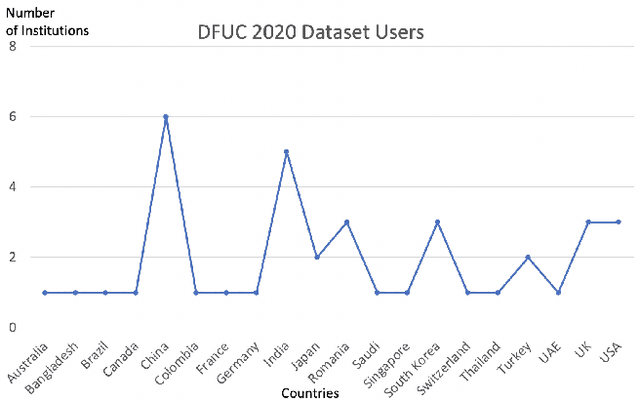
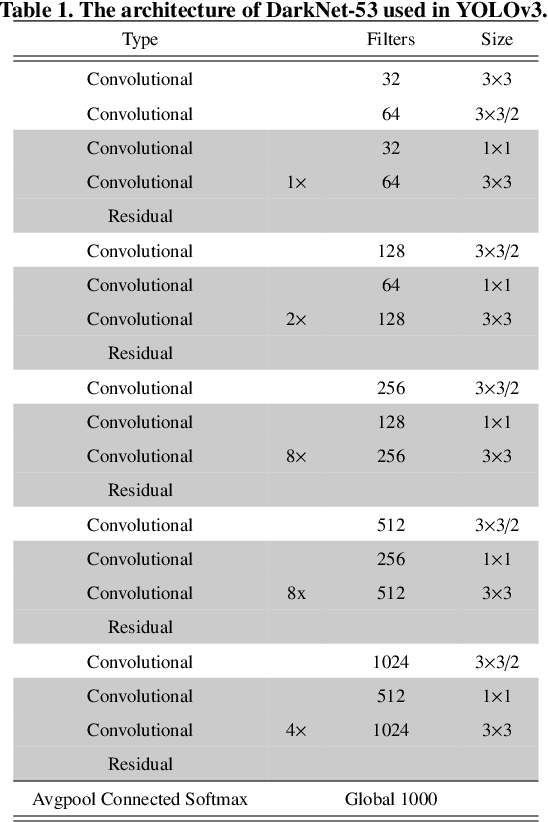
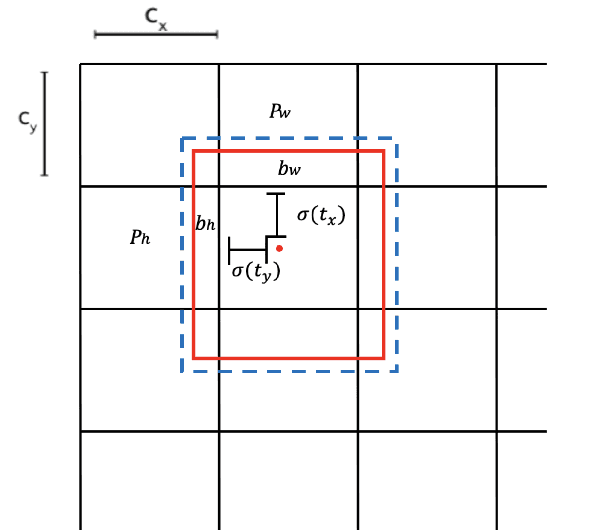
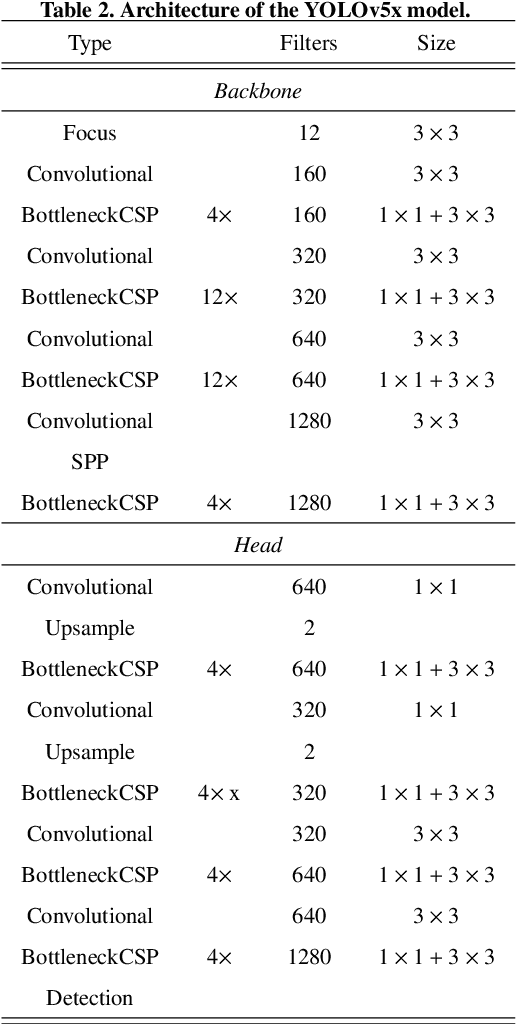
Abstract:There has been a substantial amount of research on computer methods and technology for the detection and recognition of diabetic foot ulcers (DFUs), but there is a lack of systematic comparisons of state-of-the-art deep learning object detection frameworks applied to this problem. With recent development and data sharing performed as part of the DFU Challenge (DFUC2020) such a comparison becomes possible: DFUC2020 provided participants with a comprehensive dataset consisting of 2,000 images for training each method and 2,000 images for testing them. The following deep learning-based algorithms are compared in this paper: Faster R-CNN, three variants of Faster R-CNN and an ensemble method; YOLOv3; YOLOv5; EfficientDet; and a new Cascade Attention Network. For each deep learning method, we provide a detailed description of model architecture, parameter settings for training and additional stages including pre-processing, data augmentation and post-processing. We provide a comprehensive evaluation for each method. All the methods required a data augmentation stage to increase the number of images available for training and a post-processing stage to remove false positives. The best performance is obtained Deformable Convolution, a variant of Faster R-CNN, with a mAP of 0.6940 and an F1-Score of 0.7434. Finally, we demonstrate that the ensemble method based on different deep learning methods can enhanced the F1-Score but not the mAP. Our results show that state-of-the-art deep learning methods can detect DFU with some accuracy, but there are many challenges ahead before they can be implemented in real world settings.
Cross-Domain Visual Recognition via Domain Adaptive Dictionary Learning
Apr 16, 2018
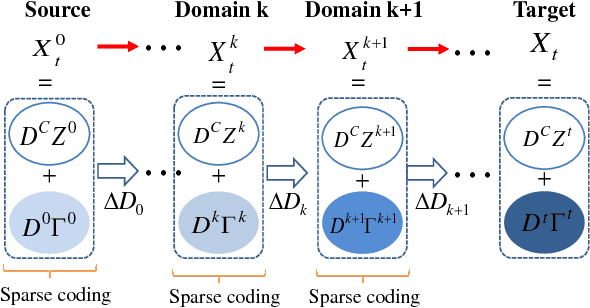
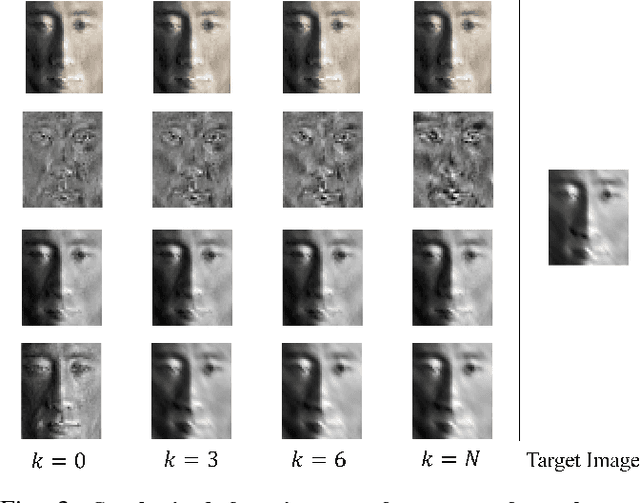

Abstract:In real-world visual recognition problems, the assumption that the training data (source domain) and test data (target domain) are sampled from the same distribution is often violated. This is known as the domain adaptation problem. In this work, we propose a novel domain-adaptive dictionary learning framework for cross-domain visual recognition. Our method generates a set of intermediate domains. These intermediate domains form a smooth path and bridge the gap between the source and target domains. Specifically, we not only learn a common dictionary to encode the domain-shared features, but also learn a set of domain-specific dictionaries to model the domain shift. The separation of the common and domain-specific dictionaries enables us to learn more compact and reconstructive dictionaries for domain adaptation. These dictionaries are learned by alternating between domain-adaptive sparse coding and dictionary updating steps. Meanwhile, our approach gradually recovers the feature representations of both source and target data along the domain path. By aligning all the recovered domain data, we derive the final domain-adaptive features for cross-domain visual recognition. Extensive experiments on three public datasets demonstrates that our approach outperforms most state-of-the-art methods.
KEPLER: Keypoint and Pose Estimation of Unconstrained Faces by Learning Efficient H-CNN Regressors
Feb 16, 2017



Abstract:Keypoint detection is one of the most important pre-processing steps in tasks such as face modeling, recognition and verification. In this paper, we present an iterative method for Keypoint Estimation and Pose prediction of unconstrained faces by Learning Efficient H-CNN Regressors (KEPLER) for addressing the face alignment problem. Recent state of the art methods have shown improvements in face keypoint detection by employing Convolution Neural Networks (CNNs). Although a simple feed forward neural network can learn the mapping between input and output spaces, it cannot learn the inherent structural dependencies. We present a novel architecture called H-CNN (Heatmap-CNN) which captures structured global and local features and thus favors accurate keypoint detecion. HCNN is jointly trained on the visibility, fiducials and 3D-pose of the face. As the iterations proceed, the error decreases making the gradients small and thus requiring efficient training of DCNNs to mitigate this. KEPLER performs global corrections in pose and fiducials for the first four iterations followed by local corrections in the subsequent stage. As a by-product, KEPLER also provides 3D pose (pitch, yaw and roll) of the face accurately. In this paper, we show that without using any 3D information, KEPLER outperforms state of the art methods for alignment on challenging datasets such as AFW and AFLW.
 Add to Chrome
Add to Chrome Add to Firefox
Add to Firefox Add to Edge
Add to Edge